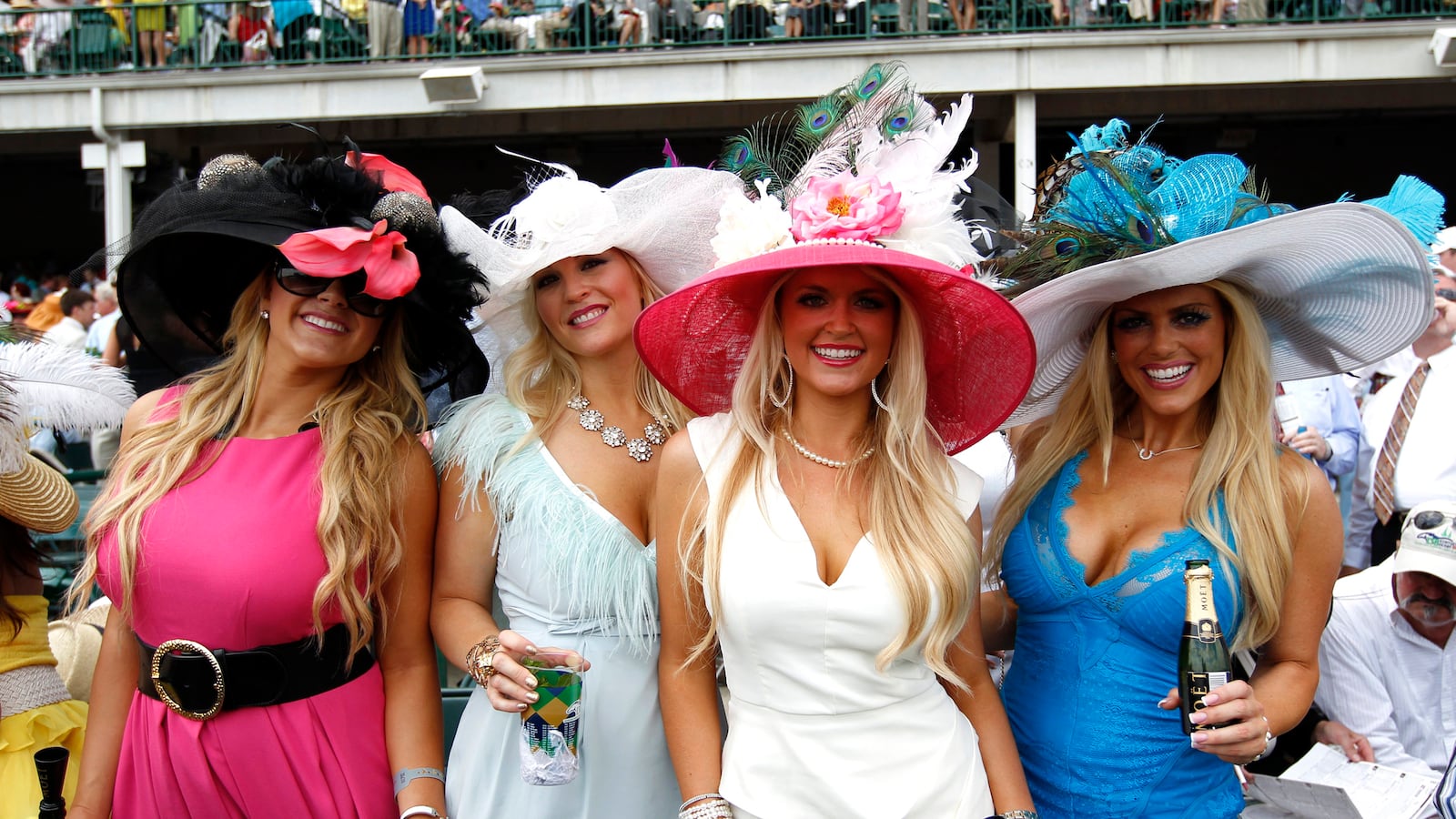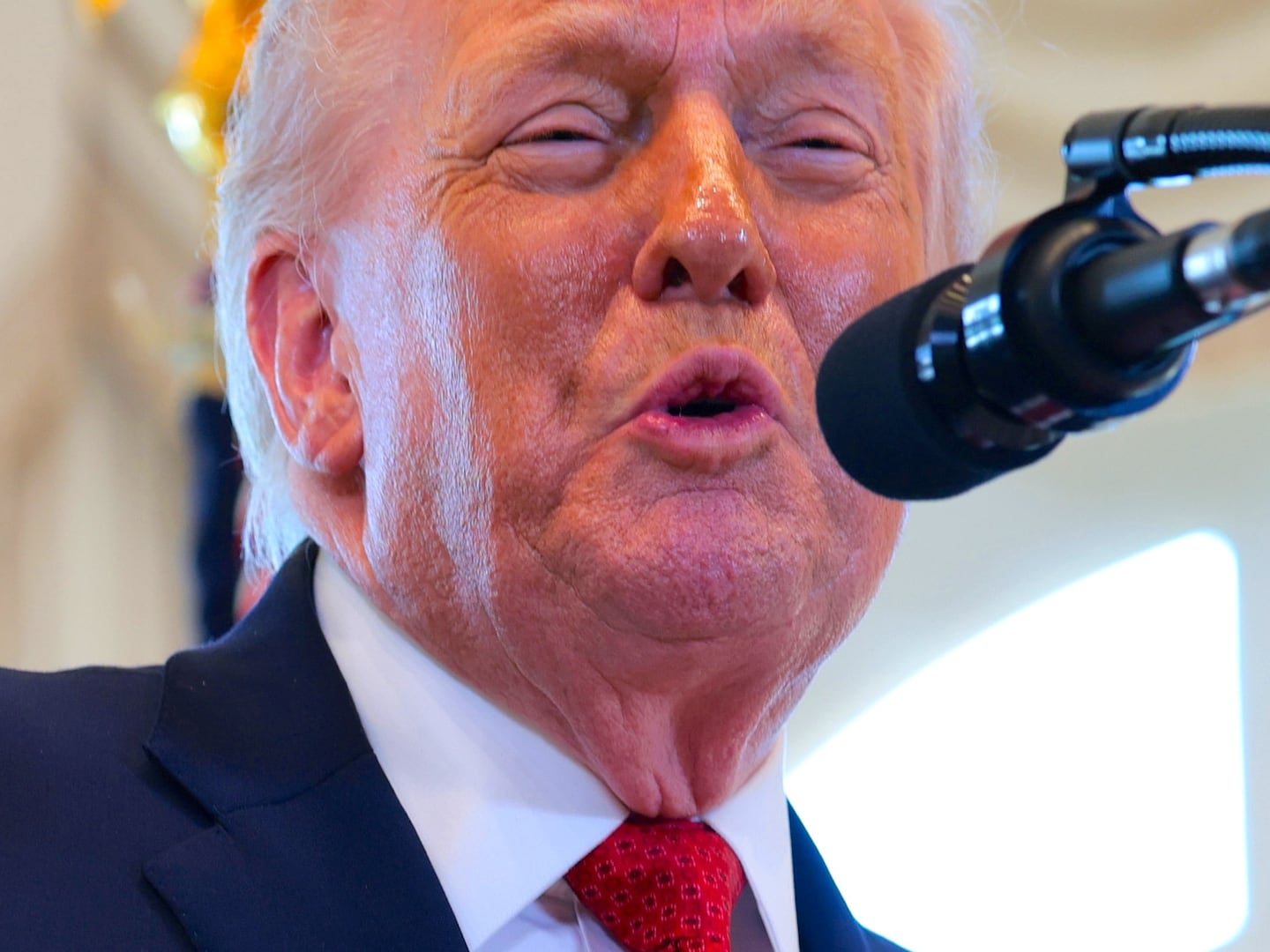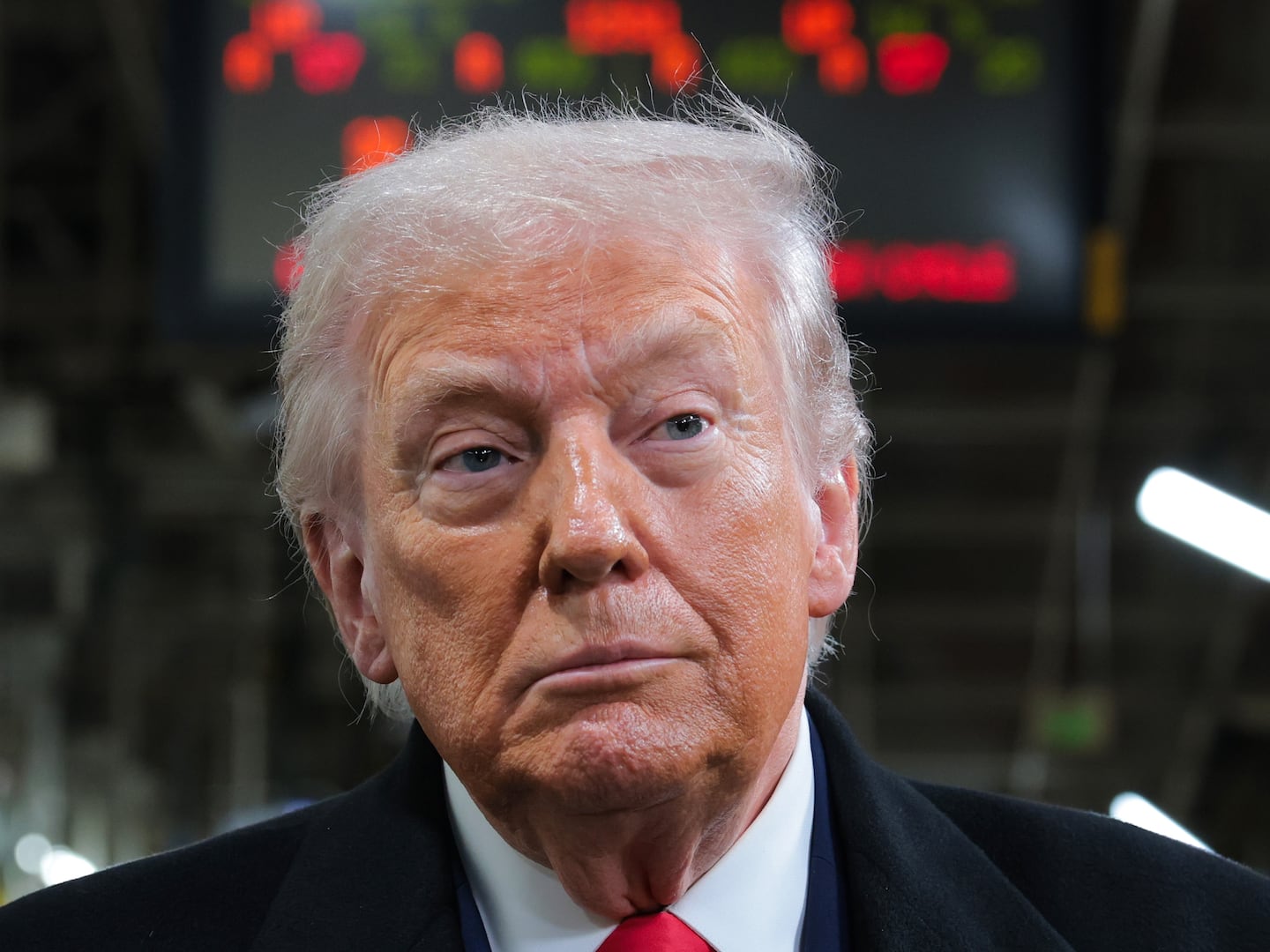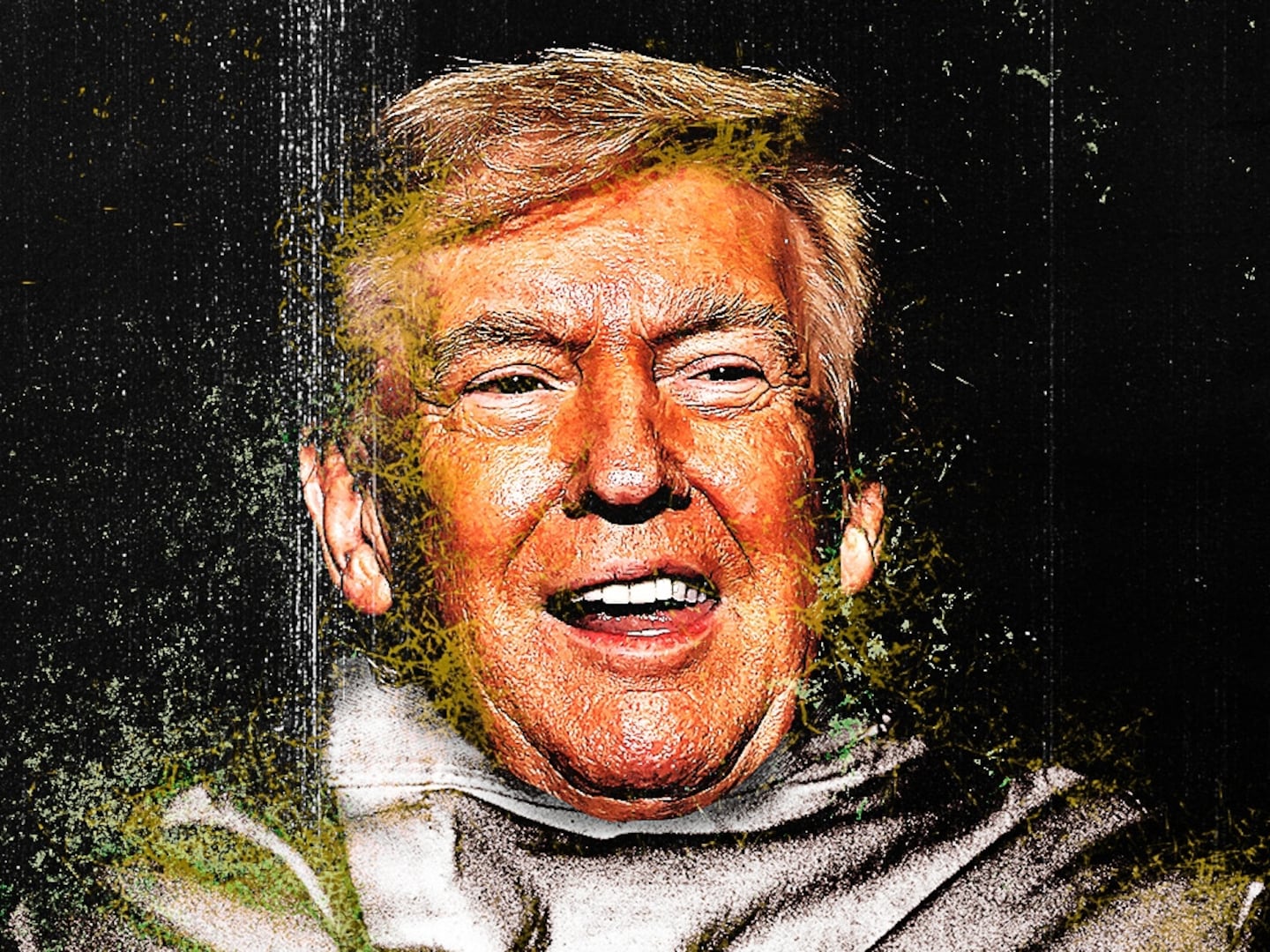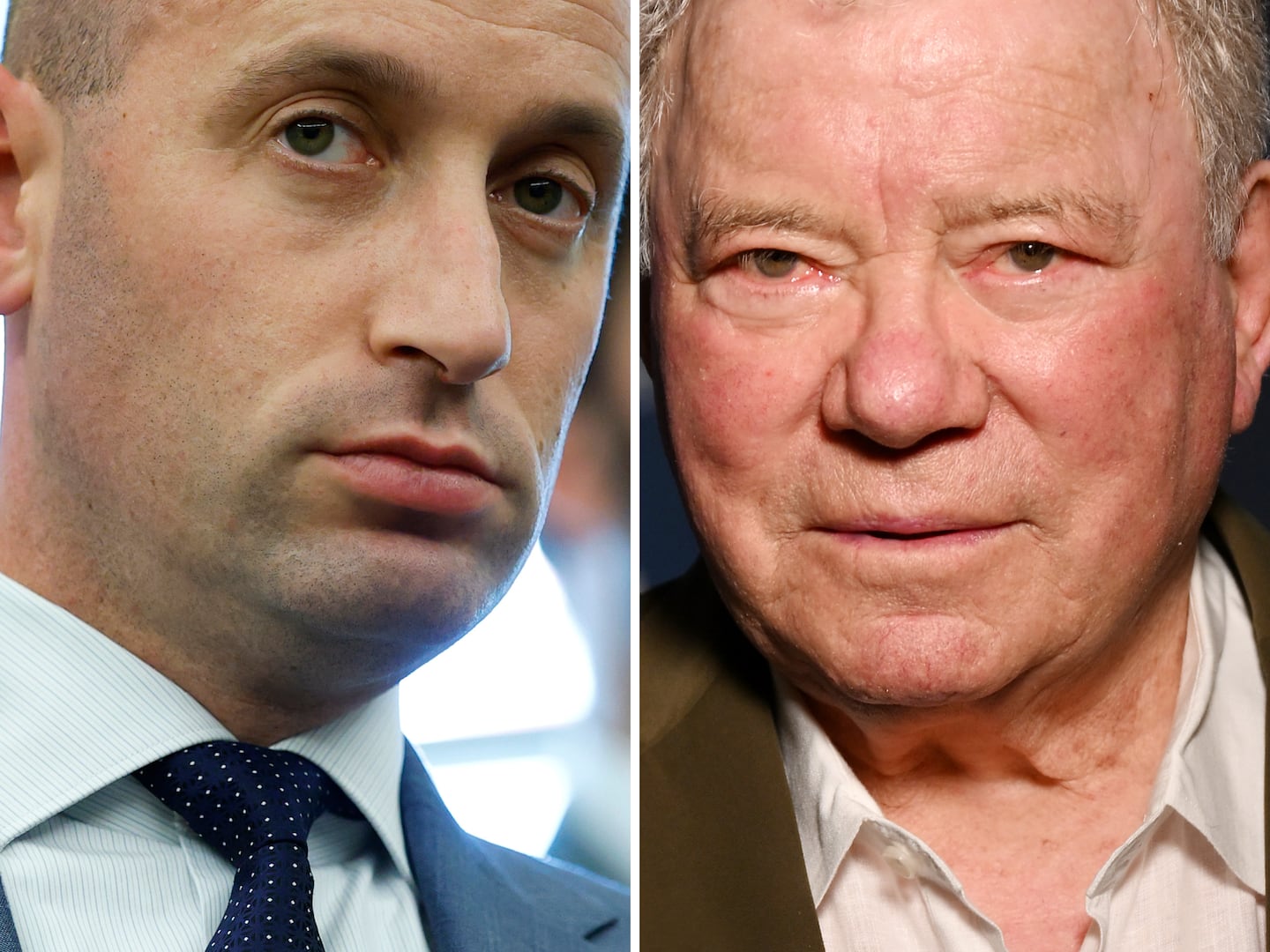
When the Kentucky Derby began in 1875 in Churchill Downs, Col. Meriwether Lewis Clark Jr. looked toward the Epson and Royal Ascot races of England for inspiration—particularly for the dress code, which read, "all guests within the Royal Enclosure adhere to a strict dress code: male attendees must wear full morning dress including a top hat, whilst ladies must not show bare midriffs or shoulders and must wear hats." In the late 1800s to early 1900s, hats signified a certain societal status. But while the accessory became less fashionable over time in society, it remained a tradition at the races. Through the years, the style of hats began to evolve, reflective of fashion trends—the Flapper looks of the 1920s saw cloche and bucket caps worn with a dress and gloves or loose suit, while the 1980s re-popularized overly elaborate hats with long skirts in bright colors. To celebrate Saturday's running of the 140th Kentucky Derby, see the evolution of the race's most coveted accessory.
John Gress/Reuters
In the 1920s and 1930s, headpieces were more simple and blended in with the fashion of the time, rather than serving as jaw-dropping accessories. “Leghorn hats, pink Milan hats, large white felt hats, and just hats drooped," one reporter recounted from the 1925 rain-drenched race. "Flimsy dresses clung closely to their humiliated wearers and fancy shoes soaked up more water than there was room inside them.” Loose suits and form-fitting dresses (particularly the "slip-on dress") were all the rage, matched with cloche hats and elbow-length gloves, and flowers were solely worn as corsages.
Bettmann/Corbis
Leghorn, cloche, and Milan hats remained popular through the 1940s, although this time most were decorated with flowers. Stylish celebrities of the time, like Carole Landis and Rita Hayworth, set trends with formal suits rather than day dresses.
Robert Abbott Sengstacke/Abbott Sengstacke Family Papers, via Getty
Formal attire became more popular in the 1950s. Women sported "chic suits, with skirts that were either fitted to the body or billowed outward with the assistance of a petticoat" alongside flat-brimmed hats made of straw or mesh and elbow-length gloves. The post-war ideals of America ushered in a generation of women looking to dress for high society, with the opening of Millionaire's Row, which marked a wardrobe (filled with feminine dresses made from taffeta, lace, netting, or chiffon) that resonated with the earliest royal traditions. It wasn't until the 1960s when these conservative looks were traded for a more relaxed attitude and style of dress—with pillbox hats, perfectly styled hair (causing a hat to be unneccessary), and long casual skirts.
Jerry Cooke/Corbis
Thanks to the relaxed stylistic choices of the 1960s, the 1970s saw a similar aesthetic—girls boasted mini skirts and trapeze dresses with their fedora or flat-brim style hats. Yet, certain women longed to maintain the original Derby traditions, leading to an increase in the larger, more elaborate headpieces fully present today.
Robert Riger/Getty
In the 1980s, the Kentucky Derby became a breeding grown for the rich and famous. Actors, socialites, and celebrities flocked to the American midwest to sport large decorated and embellished hats. The hair may have been big, but the hats were bigger, thanks to the popularity of Princess Diana and her John Boyd hats. Loose frocks and short cocktail dresses emphasized the continued fun and free-spirit of the decade.
Mike Powell/Allsport, via Getty
Think Julia Roberts in Pretty Woman, but with bigger hats. The style of the 1980s permeated through the decade, with soft clothes and loud accessories.
Gail Kamenish/AP
Although the popularity of hats diminished as a fashion trend, the tradition stayed alive at the Kentucky Derby. In the 2000s, people would flock to Kentucky and sport cotton sundresses, loose skirts, or even shorts, with the most wild and expensive of headpieces, becoming one of the most important events for American milliners. The unofficial motto of the races? The bigger, the better!
Patti Longmire/AP
Thanks to the popularity of Kate Middleton and Prince William's royal wedding, intricately detailed fascinators and elaborate hats made a strong comeback, with Philip Treacy, David Shilling, Herald and Heart, Suzanne Couture Millinery, and Forme Millinery serving as some of the most popular and best recognized designers. "I was doing fascinators before the royal wedding, but now everybody knows what that word is," Jenny Pfanenstiel, the designer behind Forme Millinery, said. "Kate Middleton has definitely brought that style to the norm."

